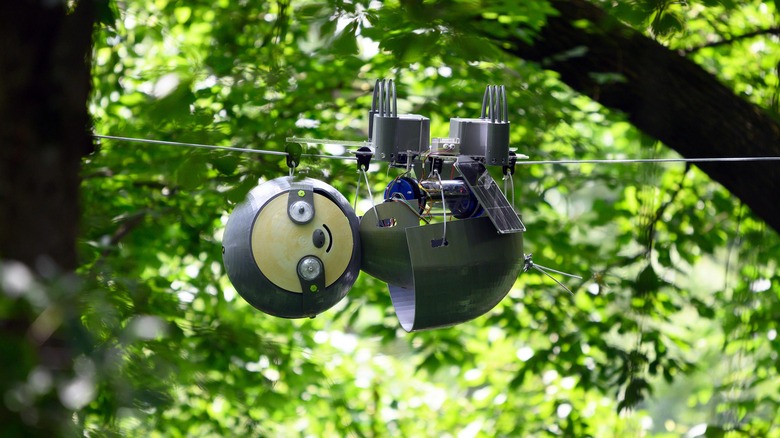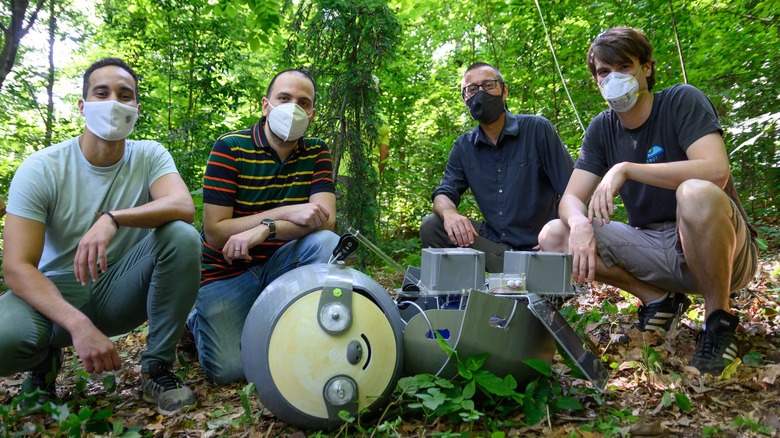How A Sloth Robot Could Save The World's Most Endangered Species
When we talk about solutions to the pressing concerns of deforestation, mass extinction, and climate change, we tend to think big. Designers try to engineer electric airliners. Drought-ridden countries call down artificial rain. The world is facing wide-ranging ecological problems. Big, fast, comprehensive solutions seem called for.
Georgia Tech has a modest proposal: what about small and slow instead?
Last year, the university completed a lengthy study based on what can only be described as a robot sloth. The adorable arboreal machine spent 13 months creeping slowly through the canopy of the Atlanta Botanical Garden. Charming visitors and gathering data, the sensibly nicknamed SlothBot "embraced slowness as a design principle" in the words of designer Magnus Egerstedt. Equipped with solar panels and an innovative low-energy design, SlothBot both collected vital observations on the weather, water levels, and degree of carbon monoxide in its 30-acre stomping grounds. It also outperformed its projected lifespan: its team at Georgia Tech expected a few months of function and got over a year.
In short, something as seemingly silly as an artificial sloth may in fact represent a future platform for long-term, low-energy solutions to anthropogenic ecological havoc.
Robot sloths and the future of biomimetics
When speaking of solutions like SlothBot, the relevant word is "biomimetic." The journal Nature defines biomimetics as "the synthesis of materials, synthetic systems or machines that have functions that mimic biological processes." In short, it's a philosophy of engineering that imitates biological systems.
Biomimetics has probably infiltrated your life already. The last time you pulled apart a piece of Velcro, the Library of Congress states, you availed yourself of a 50s-vintage imitation of the fasteners on plant burrs. We previously reported on an Airbus concept for a gas/electric hybrid airliner based on birds of prey, complete with adjustable "feathers." A widely used surgical glue uses an adhesive structure based on gecko feet, per the American Society of Mechanical Engineers. The list goes on.
Georgia Tech's thesis is that biomimetic systems are particularly suited to conservation roles. The design team built a robot based on a sloth because they expected to deploy it in an ecosystem where a sloth would thrive.
Hence, SlothBot. SlothBot works both because a slow-moving arboreal platform is ideal for collecting a wide range of climate data and because its ecosystem by definition already has a sloth-shaped hole in it. Silly as it might seem, a robot sloth really does represent a potent new way to observe endangered ecosystems by mimicking animals that belong there.

